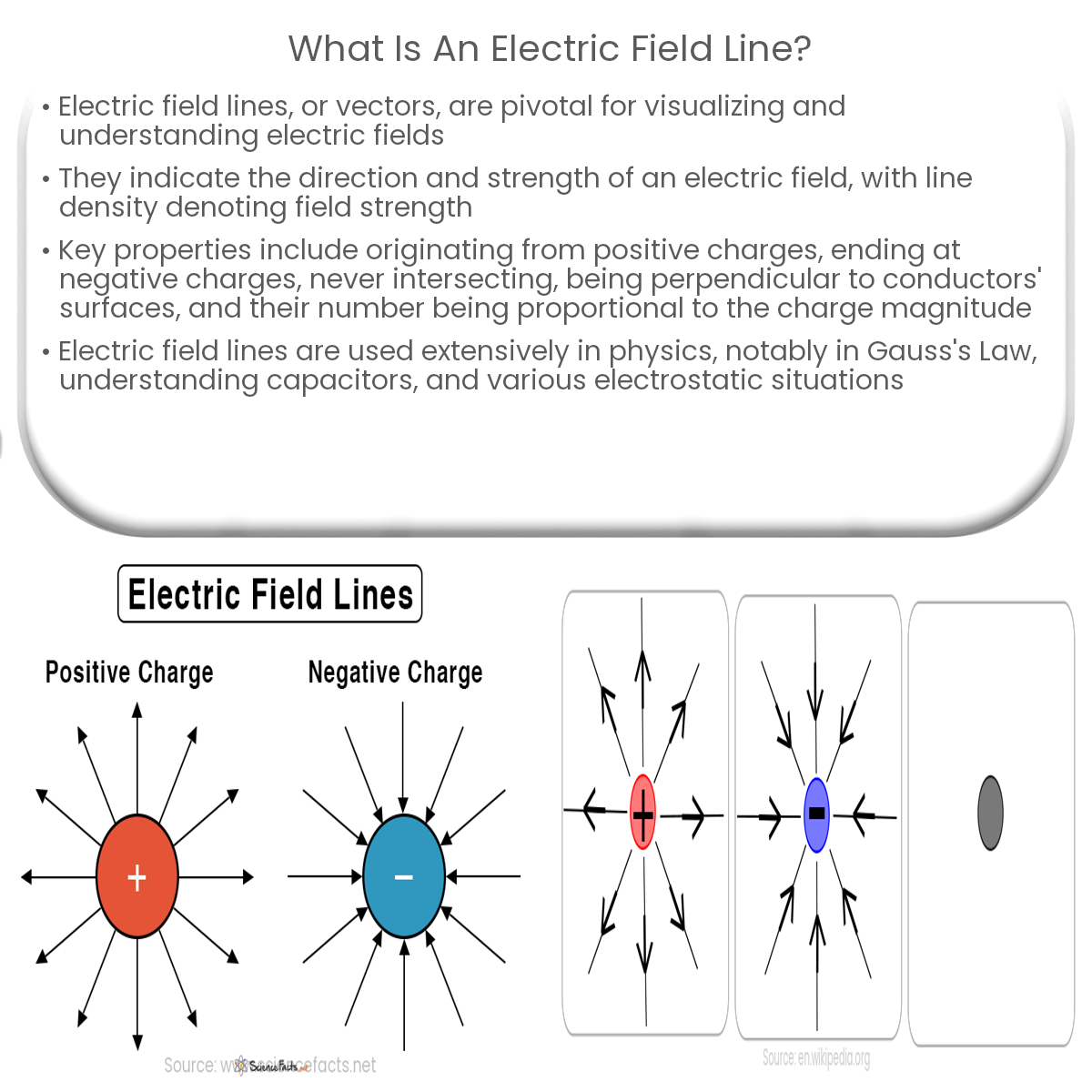An electric field line is an imaginary line representing the direction and strength of an electric field, aiding in visualization and analysis.
Understanding Electric Field Lines
An electric field line is a crucial concept in the study of electromagnetism, helping us visualize and understand the behavior of electric fields. This article will provide an overview of electric field lines, their properties, and their applications.
Defining Electric Field Lines
Electric field lines, also known as electric field vectors, are imaginary lines used to represent the direction and strength of an electric field. They are drawn in such a way that the tangent to the line at any point indicates the direction of the electric field at that point. The density of the lines indicates the strength of the electric field: a greater density of lines corresponds to a stronger field.
Properties of Electric Field Lines
- Electric field lines always originate from positive charges and terminate at negative charges. In the case of an isolated charge, the lines extend infinitely in the direction of the field.
- Field lines never cross one another. Since the lines represent the direction of the field, two lines crossing would imply two different directions for the electric field at the same point, which is not possible.
- Field lines are always perpendicular to the surface of a conductor. This is because the electric field inside a conductor is zero, and any charge present on the surface of a conductor will arrange itself in such a way as to maintain this condition.
- The number of field lines emerging from or converging to a charge is proportional to the magnitude of the charge.
Applications of Electric Field Lines
Electric field lines have a wide range of applications in the field of physics, particularly in understanding and analyzing electrostatic and electromagnetic phenomena. Some common applications include:
- Gauss’s Law: This law relates the electric flux through a closed surface to the total charge enclosed within the surface. Electric field lines are used to visualize and simplify the application of Gauss’s Law.
- Capacitance: Electric field lines help in understanding the behavior of capacitors, devices that store energy in the form of an electric field between two conductive plates.
- Electrostatics: Electric field lines are essential for visualizing and understanding the behavior of charges and electric fields in various electrostatic situations, such as point charges, dipole fields, and charged spheres.
In conclusion, electric field lines play a vital role in the study of electromagnetism, offering an intuitive way to represent electric fields and aiding our understanding of various electrostatic and electromagnetic phenomena.


